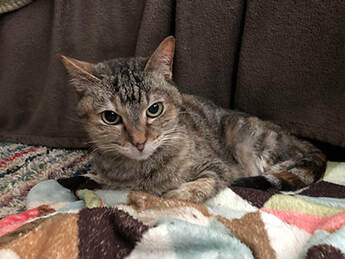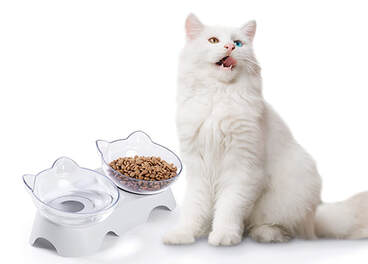
Feline vertigo or feline vestibular disease refers to a sudden, non-progressive disturbance of balance. Capable of affecting cats of all ages, those afflicted with it will become disoriented and nauseous, develop a head tilt (they often lean or fall in the direction of their head tilt), have irregular, jerking eye movements called nystagmus, and even vomit.
What, then, is the vestibular system? It’s the system responsible for maintaining a cat’s normal balance with central components located in the brain and peripheral components located in the inner and middle ear.
The possible causes of feline vertigo include middle or inner ear infections, trauma or injury, drugs toxic to the ear, hypothyroidism and tumors, particularly in older cats. When no specific cause for a cat’s condition can be determined, it’s referred to as feline idiopathic vestibular disease. Why? Because the sudden onset of the above-mentioned signs show a subsequent and rapid improvement with little, if any, medical intervention.
There are no specific tests for feline vestibular disease itself. Most cases are diagnosed based on your particular cat’s medical history, clinical signs and a thorough physical examination by your vet as well as on the results of some or all of the following: blood tests, urine tests (these check for urinary tract infections and kidney function), ear cultures and cytology (examination of any discharge or fluids found in the ear canal), spinal fluid analysis, testing for kidney, liver and pancreatic function, thyroid testing to determine hormone production, and electrolyte tests to check for dehydration or an electrolyte imbalance.
In some cases, testing may also include blood pressure measurements and head x-rays to assess the appearance of the middle and inner ears while, occasionally, a CT scan or MRI will be performed to look for tumors or other abnormalities.
Any subsequent course of action will ultimately depend on your cat’s symptoms and on whether a cause for her condition has been established. If a cause has indeed been determined, then the underlying condition will be treated rather than the vestibular disease itself.
In the case of middle or inner ear infections, however, your vet may prescribe antibiotics or anti-fungal medications as well as a medication to reduce her motion sickness, nausea and vomiting. Since idiopathic vestibular disease is a short-term, self-resolving condition, its symptoms are typically worse in the first 24 to 48 hours and improve steadily over the next two to three weeks
But, as a conscientious pet parent, you can help your kitty feel better while her symptoms are at their worst by following these suggestions:
Manage your own stress because cats are extremely sensitive to our emotions.
Keep her confined in a quiet, safe space far from any stairs.
Support her by surrounding her with a thick, rolled up blanket.
Ensure that her food and water bowls and litter box are at ground level and nearby.
Make certain that she remains hydrated and fed if she can’t do so herself.
If she’s unable to stand at all, assist her in changing positions periodically to prevent any sores from developing on her body.
Avoid the temptation to carry her since she has to walk in order to re-train her “navigational” system.
Whereas the majority of cats make a complete recovery, some severely affected ones may be left with a head tilt. The good news is that in most cases of feline idiopathic vestibular disease, the condition will never reappear.










 RSS Feed
RSS Feed